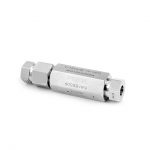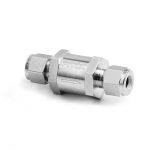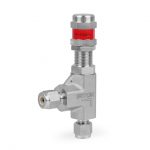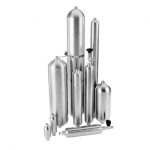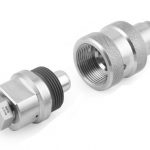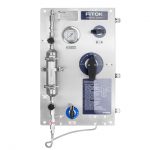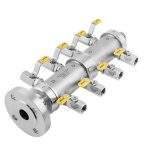Excess Flow Valves
Introduction
If downstream line ruptures, the excess flow valve can stop uncontrolled release of system media. When the system is functioning normally, the working element remains in the open position. If the excess flow occurs downstream, the working element quickly moves to the tripped position to stop bleeding. When system pressure reaches balance through the bleed vent, the spring resets the working element to the open position automatically. The flow which goes through the bleed vent should be lower than one percent of the flow rate in the trip range.
EV Series
Compact design as a result convenient installation
Maximum working pressure: 6000 psig (414 bar)
Working temperature: -10 F to 400 F (-23 C to 204 C)
Stainless steel construction
Leak tight performance testing for every valve with nitrogen at the maximum working pressure
End connections:
1/4″ to 1/2″ male 6 mm to 12 mm tube fitting
1/4 to 1/2 male FR Fitting
1/4 to 1/2
High Pressure Excess Flow Valve
Features
15EF Series (NPT ends): -110°F to 400°F (-79°C to 204°C)
15EF Series (DFF ends): -110°F to 800°F (-79°C to 427°C)
20EF and 60EF Series: -110°F to 1200°F (-79°C to 649°C)
Protect pressure gauges and pressure instruments from sudden surges in flow or venting in the during of line failure
Working temperature range:
Equalize the pressure across the ball, and the ball will drop and reset automatically
The valve must be installed in vertical position with arrow on valve body pointing up
Valve body made of high tensile 316 stainless steel for as a result maximum wear and corrosion resistance
Optional materials of cover and ball during longer life

